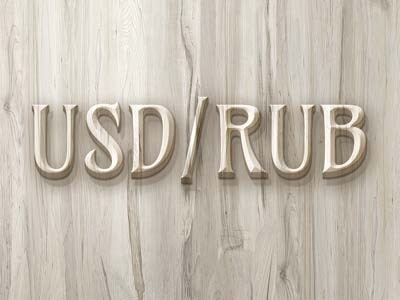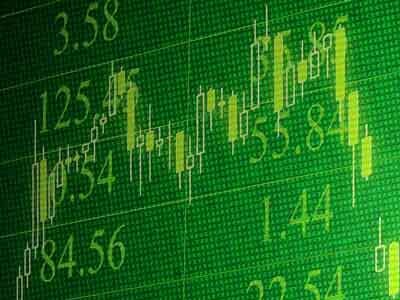No, this is not a dream: the ruble on Friday felt the 57 per dollar that had long since sunk into oblivion...
Some hotheads, not fully understanding the essence of economic processes, entered the race to see who would give the forecast of the highest ruble exchange rate. Sberbank predicts 50, Loco-Invest - 40, somewhere else I heard 26, and very far from the economy they call the rate 1/1. No, of course you can close the market and hang such a sign as in the USSR, then a black market will arise.
So, why can I say with a high degree of confidence that the lira's exchange rate against the dollar and the euro will collapse when the Turkish budget runs out of money to support it under the deposit protection programs introduced in December. Because Turkey has 70% inflation, and the USA and Europe are below 10% (PPP theory). Inflation as a basic characteristic of the economy is always primary before the exchange rate, because the task of the exchange rate is to balance foreign trade and capital flows. If this balancing does not occur, foreign trade stops. If an artificial element is introduced into this process in the form of capital controls, including interventions through shell banks and deposit protection programs, a temporary deviation may occur.
The same is true with the ruble, but in Russia inflation is not the main factor now, and there is no such sharp difference with the issuing countries of euros and dollars.
For Russia, the main parameters of the economy now, due to changes in logistics, sanctions and other temporary difficulties, have become export and import flows. The excess of exports on imports since the beginning of the year is three times higher than it was three years ago. This means that since the beginning of the year, exporters have been selling more currency than importers buy it, three times more, or about $90 billion. This canopy raised the ruble exchange rate — artificially, and not on the market, as Mr. Oreshkin claims. It is difficult for me to call a market a market where only exporters and importers are present. In the usual understanding, capital flows form the market, they always drive the course; that is why macroeconomic news causes such a reaction to Forex. Until February 24, the exchange rate was market-based, because foreigners from, as they say now, "unfriendly countries" could sell the currency. Now neither they nor other categories of players can do it.
If foreigners were given the opportunity to sell Russian assets now and then sell the ruble for the euro and the dollar, the exchange rate would soar to 200, 300, 500 and so on - it depends on the subtlety of the market at one time or another and various kinds of flash crashes. But it is also true that if the gold reserves had not been frozen, the exchange rate due to the sale of 200-300 billion dollars would have fallen to 120-150. That is why the export-import market, which does not exist in any country without restrictions on the movement of capital, is not a market, but an artificial exchange rate. This explains the paradox of the ruble's growth by 100% from the minimum in the conditions of the upcoming recession and high inflation.
But even in such an artificial market, trees do not grow to the skies. Why? There are two big reasons. The first is the marginal costs of the exporter, the second is sanctions + time lag = reduction of export flows.
As for the first one, let's say the ruble exchange rate will strengthen to 40 per dollar. Perhaps it is here that producers of oil, gas, metals, fertilizers and agricultural products will not be able to reach the cost price level. And this means that the supply of goods from their side will begin to decrease. The surplus of the foreign trade balance will begin to decrease. There will be movement on the importer's side as well. For him, the prospect of profit will be so tempting that imports will start to grow sharply. The positive balance will turn into a negative one, and the ruble exchange rate will begin to decline.
The second is sanctions. Gazprom has stopped gas supplies to Poland, Bulgaria and Finland. The EU threatens to reduce purchases of Russian gas in the future. The oil embargo has been imposed in the form of self-sanctions; Russian oil exports are declining. It takes time to reorient these flows (which have increased in value terms after the rise in world prices) to other markets, and it is not completely clear whether all exports will find new buyers, who are now increasingly demanding a discount. Therefore, in the very next few months, export revenues will decrease. That is why at the end of the year, many banks have the ruble exchange rate much lower in forecasts than it is now.
As you know, there is no smoke without fire, and even more so if the authoritative Vedomosti writes about it. Exporters seem to be so bad now and so sorry to give them currency for a song that it seems the Central Bank has started buying it with fake banks. They began to write about their pain and suffering below 80 rubles. The regulator cannot buy currency for itself now. He was deprived of the right to regulate the dollar and euro exchange rate by currency interventions. If he buys them, this currency is reflected in the accounts of the issuers - the ECB and the Fed and it will be immediately seized. But some shell banks, for which there is less risk of sanctions, can temporarily buy something. On the other hand, for some reason the authorities do not want to reduce the threshold of 80% of the sale of mandatory revenue. Probably, they are afraid that exporters will leave everything abroad, which sooner or later may also be arrested. But gradually the weakening of all currency restrictions shows us how the Central Bank does not like such a high ruble exchange rate, even though such a rate helps to fight inflation and declare victory in the sanctions war with the West.
On Friday, as it turned out, there was not a reverse, but perhaps a fixation before the weekend. And, it is possible that this veiled intervention of the Central Bank to weaken the ruble took place after all. Now there is a tax period, and if the ruble manages to be deployed in the coming days, it will fall very much in early June.


 Express forex forecast for the GBP/USD pairBased on technical modeling for the pound/dollar pair, a forecast of further movement has been formed and the average price is predisposed to decline.In this technical situation, the pound can be sold from the level of 1.2614, you can also place a pending sell order at the level of 1.2679 in order to decrease to the area of 1.2525-1.2445, the stop with this strategy can be placed at the level of 1.2725.If we receive a profit of 30 points or more, we fix 50% of the position, and put the rest at breakeven. If this forecast for the GBP/USD pair coincides with your opinion, then you can safely use this strategy.Forex strategy for the USD/CAD pairThe USD/CAD pair is trading within an uptrend on a 4-hour chart. It shows that the USD/CAD exchange rate is trading above the moving average with a period of 55 on the hourly chart (level 1.3549), which generally contributes to the price increase in the short term. I recommend working on this pair from sales based on the established wave model.The signal to open a long position will be a breakdown at the end of the resistance hour at the level of 1.3629 in order to increase to the resistance at the level of 1.3678 and in case of its breakdown at the end of the hour to 1.3736. The stop loss with this strategy can be placed at the level of 1.3540.The signal to open a short position will be a breakdown at the end of the support hour at 1.3549 with the aim of reducing to support at 1.3488 in case of its breakdown at the end of the 1.3429 hour. The stop loss with this strategy can be placed at the level of 1.3653.Given that the moving average and the location of the boundaries of technical figures are moving over time, it is necessary to adjust their position on the hourly chart. I also recommend opening positions at the end of the hour to avoid false breakouts.
Express forex forecast for the GBP/USD pairBased on technical modeling for the pound/dollar pair, a forecast of further movement has been formed and the average price is predisposed to decline.In this technical situation, the pound can be sold from the level of 1.2614, you can also place a pending sell order at the level of 1.2679 in order to decrease to the area of 1.2525-1.2445, the stop with this strategy can be placed at the level of 1.2725.If we receive a profit of 30 points or more, we fix 50% of the position, and put the rest at breakeven. If this forecast for the GBP/USD pair coincides with your opinion, then you can safely use this strategy.Forex strategy for the USD/CAD pairThe USD/CAD pair is trading within an uptrend on a 4-hour chart. It shows that the USD/CAD exchange rate is trading above the moving average with a period of 55 on the hourly chart (level 1.3549), which generally contributes to the price increase in the short term. I recommend working on this pair from sales based on the established wave model.The signal to open a long position will be a breakdown at the end of the resistance hour at the level of 1.3629 in order to increase to the resistance at the level of 1.3678 and in case of its breakdown at the end of the hour to 1.3736. The stop loss with this strategy can be placed at the level of 1.3540.The signal to open a short position will be a breakdown at the end of the support hour at 1.3549 with the aim of reducing to support at 1.3488 in case of its breakdown at the end of the 1.3429 hour. The stop loss with this strategy can be placed at the level of 1.3653.Given that the moving average and the location of the boundaries of technical figures are moving over time, it is necessary to adjust their position on the hourly chart. I also recommend opening positions at the end of the hour to avoid false breakouts.  Express forex forecast for the GBP/USD pairBased on technical modeling for the pound/dollar pair, a forecast of further movement has been formed and the average is urgently predisposed to an increase.In this technical situation, the pound can be bought from the level of 1.2591, you can also place a pending purchase order at the level of 1.2551 in order to increase to the area of 1.2733-1.2984, the stop with this strategy can be placed at the level of 1.2530.If we receive a profit of 30 points or more, we fix 50% of the position, and put the rest at breakeven. If this forecast for the GBP/USD pair coincides with your opinion, then you can safely use this strategy.Forex strategy for the USD/CAD pairThe USD/CAD pair is trading within an uptrend on a 4-hour chart. It shows that the USD/CAD exchange rate is trading above the moving average with a period of 55 on the hourly chart (level 1.3547), which generally contributes to the price increase in the short term. I recommend working on this pair from sales based on the established wave model.The signal to open a long position will be a breakdown at the end of the resistance hour at 1.3627 in order to increase to the resistance at 1.3678 and in case of its breakdown at the end of the hour to 1.3719. Stop loss with this strategy can be placed at 1.3560.The signal to open a short position will be a breakdown at the end of the support hour at the level of 1.3488 with the aim of reducing to support at the level of 1.3429 in case of its breakdown at the end of the hour 1.3381. The stop loss with this strategy can be placed at the level of 1.3615.Given that the moving average and the location of the boundaries of technical figures are moving over time, it is necessary to adjust their position on the hourly chart. I also recommend opening positions at the end of the hour to avoid false breakouts.
Express forex forecast for the GBP/USD pairBased on technical modeling for the pound/dollar pair, a forecast of further movement has been formed and the average is urgently predisposed to an increase.In this technical situation, the pound can be bought from the level of 1.2591, you can also place a pending purchase order at the level of 1.2551 in order to increase to the area of 1.2733-1.2984, the stop with this strategy can be placed at the level of 1.2530.If we receive a profit of 30 points or more, we fix 50% of the position, and put the rest at breakeven. If this forecast for the GBP/USD pair coincides with your opinion, then you can safely use this strategy.Forex strategy for the USD/CAD pairThe USD/CAD pair is trading within an uptrend on a 4-hour chart. It shows that the USD/CAD exchange rate is trading above the moving average with a period of 55 on the hourly chart (level 1.3547), which generally contributes to the price increase in the short term. I recommend working on this pair from sales based on the established wave model.The signal to open a long position will be a breakdown at the end of the resistance hour at 1.3627 in order to increase to the resistance at 1.3678 and in case of its breakdown at the end of the hour to 1.3719. Stop loss with this strategy can be placed at 1.3560.The signal to open a short position will be a breakdown at the end of the support hour at the level of 1.3488 with the aim of reducing to support at the level of 1.3429 in case of its breakdown at the end of the hour 1.3381. The stop loss with this strategy can be placed at the level of 1.3615.Given that the moving average and the location of the boundaries of technical figures are moving over time, it is necessary to adjust their position on the hourly chart. I also recommend opening positions at the end of the hour to avoid false breakouts.  Forex forecast for USD/CADThe USD/CAD pair is trading within an uptrend on a 4-hour chart. It shows that the USD/CAD exchange rate is trading above the moving average with a period of 55 on the hourly chart (level 1.3509), which generally contributes to the price increase in the short term. I recommend working on this pair from sales based on the established wave model.The signal to open a long position will be a breakdown at the end of the resistance hour at 1.3575 in order to increase to the resistance at 1.3627 and in case of its breakdown at the end of the hour to 1.3678. Stop loss with this strategy can be placed at 1.3480.The signal to open a short position will be a breakdown at the end of the support hour at 1.3488 with the aim of reducing to support at 1.3429 in case of its breakdown at the end of the 1.3381 hour. The stop loss with this strategy can be placed at the level of 1.3615.Given that the moving average and the location of the boundaries of technical figures are moving over time, it is necessary to adjust their position on the hourly chart. I also recommend opening positions at the end of the hour to avoid false breakouts.Forex forecast for GBP/USDBased on technical modeling for the pound/dollar pair, a forecast of further movement has been formed and the average price is predisposed to decline.In this technical situation, the pound can be sold from the level of 1.2725, you can also place a pending sell order at the level of 1.2767 in order to decrease to the area of 1.2609-1.2508, the stop with this strategy can be placed at the level of 1.2830.If we receive a profit of 30 points or more, we fix 50% of the position, and put the rest at breakeven. If this forecast for the GBP/USD pair coincides with your opinion, then you can safely use this strategy.
Forex forecast for USD/CADThe USD/CAD pair is trading within an uptrend on a 4-hour chart. It shows that the USD/CAD exchange rate is trading above the moving average with a period of 55 on the hourly chart (level 1.3509), which generally contributes to the price increase in the short term. I recommend working on this pair from sales based on the established wave model.The signal to open a long position will be a breakdown at the end of the resistance hour at 1.3575 in order to increase to the resistance at 1.3627 and in case of its breakdown at the end of the hour to 1.3678. Stop loss with this strategy can be placed at 1.3480.The signal to open a short position will be a breakdown at the end of the support hour at 1.3488 with the aim of reducing to support at 1.3429 in case of its breakdown at the end of the 1.3381 hour. The stop loss with this strategy can be placed at the level of 1.3615.Given that the moving average and the location of the boundaries of technical figures are moving over time, it is necessary to adjust their position on the hourly chart. I also recommend opening positions at the end of the hour to avoid false breakouts.Forex forecast for GBP/USDBased on technical modeling for the pound/dollar pair, a forecast of further movement has been formed and the average price is predisposed to decline.In this technical situation, the pound can be sold from the level of 1.2725, you can also place a pending sell order at the level of 1.2767 in order to decrease to the area of 1.2609-1.2508, the stop with this strategy can be placed at the level of 1.2830.If we receive a profit of 30 points or more, we fix 50% of the position, and put the rest at breakeven. If this forecast for the GBP/USD pair coincides with your opinion, then you can safely use this strategy.  Forex forecast for USD/CADThe USD/CAD pair is trading within an uptrend on a 4-hour chart. It shows that the USD/CAD exchange rate is trading above the moving average with a period of 55 on the hourly chart (level 1.3509), which generally contributes to the price increase in the short term. I recommend working on this pair from sales based on the established wave model.The signal to open a long position will be a breakdown at the end of the resistance hour at 1.3568 in order to increase to the resistance at 1.3618 and in case of its breakdown at the end of the hour to 1.3678. Stop loss with this strategy can be placed at 1.3480.The signal to open a short position will be a breakdown at the end of the support hour at 1.3488 with the aim of reducing to support at 1.3429 in case of its breakdown at the end of the 1.3381 hour. The stop loss with this strategy can be placed at the level of 1.3595.Given that the moving average and the location of the boundaries of technical figures are moving over time, it is necessary to adjust their position on the hourly chart. I also recommend opening positions at the end of the hour to avoid false breakouts.Forex forecast for GBP/USDBased on technical modeling for the pound/dollar pair, a forecast of further movement has been formed and the average price is predisposed to decline.In this technical situation, the pound can be sold from the level of 1.2742, you can also place a pending sell order at the level of 1.2767 in order to decrease to the area of 1.2609-1.2508, the stop with this strategy can be placed at the level of 1.2830.In the case of a profit of 30 points or more, we fix 50% of the position, and put the rest at no loss. If this forecast for the GBP/USD pair coincides with your opinion, then you can safely use this strategy.
Forex forecast for USD/CADThe USD/CAD pair is trading within an uptrend on a 4-hour chart. It shows that the USD/CAD exchange rate is trading above the moving average with a period of 55 on the hourly chart (level 1.3509), which generally contributes to the price increase in the short term. I recommend working on this pair from sales based on the established wave model.The signal to open a long position will be a breakdown at the end of the resistance hour at 1.3568 in order to increase to the resistance at 1.3618 and in case of its breakdown at the end of the hour to 1.3678. Stop loss with this strategy can be placed at 1.3480.The signal to open a short position will be a breakdown at the end of the support hour at 1.3488 with the aim of reducing to support at 1.3429 in case of its breakdown at the end of the 1.3381 hour. The stop loss with this strategy can be placed at the level of 1.3595.Given that the moving average and the location of the boundaries of technical figures are moving over time, it is necessary to adjust their position on the hourly chart. I also recommend opening positions at the end of the hour to avoid false breakouts.Forex forecast for GBP/USDBased on technical modeling for the pound/dollar pair, a forecast of further movement has been formed and the average price is predisposed to decline.In this technical situation, the pound can be sold from the level of 1.2742, you can also place a pending sell order at the level of 1.2767 in order to decrease to the area of 1.2609-1.2508, the stop with this strategy can be placed at the level of 1.2830.In the case of a profit of 30 points or more, we fix 50% of the position, and put the rest at no loss. If this forecast for the GBP/USD pair coincides with your opinion, then you can safely use this strategy.  Forex forecast for USD/CADThe USD/CAD pair is trading within an uptrend on a 4-hour chart. It shows that the USD/CAD exchange rate is trading above the moving average with a period of 55 on the hourly chart (level 1.3501), which generally contributes to the price increase in the short term. I recommend working on this pair from sales based on the established wave model.The signal to open a long position will be a breakdown at the end of the resistance hour at 1.3568 in order to increase to the resistance at 1.3618 and in case of its breakdown at the end of the hour to 1.3678. Stop loss with this strategy can be placed at 1.3480.The signal to open a short position will be a breakdown at the end of the support hour at 1.3488 with the aim of reducing to support at 1.3429 in case of its breakdown at the end of the 1.3381 hour. The stop loss with this strategy can be placed at the level of 1.3595.Given that the moving average and the location of the boundaries of technical figures are moving over time, it is necessary to adjust their position on the hourly chart. I also recommend opening positions at the end of the hour to avoid false breakouts.Forex forecast for British pound/US dollarBased on technical modeling for the pound/dollar pair, a forecast of further movement has been formed and the average is urgently predisposed to an increase.In this technical situation, the pound can be bought from the level of 1.2765, you can also place a pending purchase order at the level of 1.2730 in order to increase to the area of 1.2878-1.2987, the stop with this strategy can be placed at the level of 1.2650.In the case of a profit of 30 points or more, we fix 50% of the position, and put the rest at no loss. If this forecast for the GBP/USD pair coincides with your opinion, then you can safely use this strategy.
Forex forecast for USD/CADThe USD/CAD pair is trading within an uptrend on a 4-hour chart. It shows that the USD/CAD exchange rate is trading above the moving average with a period of 55 on the hourly chart (level 1.3501), which generally contributes to the price increase in the short term. I recommend working on this pair from sales based on the established wave model.The signal to open a long position will be a breakdown at the end of the resistance hour at 1.3568 in order to increase to the resistance at 1.3618 and in case of its breakdown at the end of the hour to 1.3678. Stop loss with this strategy can be placed at 1.3480.The signal to open a short position will be a breakdown at the end of the support hour at 1.3488 with the aim of reducing to support at 1.3429 in case of its breakdown at the end of the 1.3381 hour. The stop loss with this strategy can be placed at the level of 1.3595.Given that the moving average and the location of the boundaries of technical figures are moving over time, it is necessary to adjust their position on the hourly chart. I also recommend opening positions at the end of the hour to avoid false breakouts.Forex forecast for British pound/US dollarBased on technical modeling for the pound/dollar pair, a forecast of further movement has been formed and the average is urgently predisposed to an increase.In this technical situation, the pound can be bought from the level of 1.2765, you can also place a pending purchase order at the level of 1.2730 in order to increase to the area of 1.2878-1.2987, the stop with this strategy can be placed at the level of 1.2650.In the case of a profit of 30 points or more, we fix 50% of the position, and put the rest at no loss. If this forecast for the GBP/USD pair coincides with your opinion, then you can safely use this strategy.  USDCAD signalsUSDCAD is trading in a downtrend on the 4-hour chart. It shows that the USD/CAD rate is trading below the moving average with a period of 55 on the hourly chart (the level of 1.3462), which generally contributes to the decline in the price in the short term. I recommend to sell on this pair on the basis of the existing wave pattern.The signal for long position opening will be a break-down and fixing above the resistance at 1.3500 with the aim to go up to the resistance level of 1.3552 and in case of its break-down at the end of the hour to 1.3606. Stop loss in this strategy may be placed at the level of 1.3440.The signal for the opening of a short position is a break-down and fixation at the level of 1.3349 with the aim of going down to the support at 1.3295, in case of its breakdown an hour later, to 1.3243. Stop-loss in this strategy can be placed at the level of 1.3475.EURUSD signalsEURUSD is trading within the ascending price channel on the hourly chart. I recommend opening long positions in case the pair breaks through and rises above the resistance at 1.0810, aiming to the resistance at 1.0837-1.0869. Stop loss below 1.0760.I recommend to open short positions after breakdown and fixation below the support at the level of 1.0764 with the aim to go down to the support at the level of 1.0737-1.0710. Stop-loss is above 1.0820.GBPUSD signalsOn the basis of technical modeling on pair pound/dollar the forecast of the further movement was formed and the average urgency is predisposed to rise.In the given technical situation pound can be bought from the level of 1.2243 and also it is possible to expose the pending buy order at the level of 1.2170 with the purpose of increase in the area of resistance at the level of 1.2353-1.2446, the stop at this strategy can be placed at the level of 1.2070.
USDCAD signalsUSDCAD is trading in a downtrend on the 4-hour chart. It shows that the USD/CAD rate is trading below the moving average with a period of 55 on the hourly chart (the level of 1.3462), which generally contributes to the decline in the price in the short term. I recommend to sell on this pair on the basis of the existing wave pattern.The signal for long position opening will be a break-down and fixing above the resistance at 1.3500 with the aim to go up to the resistance level of 1.3552 and in case of its break-down at the end of the hour to 1.3606. Stop loss in this strategy may be placed at the level of 1.3440.The signal for the opening of a short position is a break-down and fixation at the level of 1.3349 with the aim of going down to the support at 1.3295, in case of its breakdown an hour later, to 1.3243. Stop-loss in this strategy can be placed at the level of 1.3475.EURUSD signalsEURUSD is trading within the ascending price channel on the hourly chart. I recommend opening long positions in case the pair breaks through and rises above the resistance at 1.0810, aiming to the resistance at 1.0837-1.0869. Stop loss below 1.0760.I recommend to open short positions after breakdown and fixation below the support at the level of 1.0764 with the aim to go down to the support at the level of 1.0737-1.0710. Stop-loss is above 1.0820.GBPUSD signalsOn the basis of technical modeling on pair pound/dollar the forecast of the further movement was formed and the average urgency is predisposed to rise.In the given technical situation pound can be bought from the level of 1.2243 and also it is possible to expose the pending buy order at the level of 1.2170 with the purpose of increase in the area of resistance at the level of 1.2353-1.2446, the stop at this strategy can be placed at the level of 1.2070.  USDCAD signalsUSDCAD is trading in a downtrend on the 4-hour chart. It shows that the USD/CAD rate is trading below the moving average with a period of 55 on the hourly chart (the level of 1.3479), which generally contributes to the decline in the price in the short term. I recommend to sell on this pair on the basis of the existing wave pattern.The signal for long position opening will be a breakdown and fixation at the level of 1.3500 with the aim to go up to the resistance at 1.3552 and in case of its breakdown and fixation at the level of 1.3606. Stop loss in this strategy may be placed at the level of 1.3440.The signal for the opening of a short position will be a breakdown and fixation at the level of 1.3349 with the aim of reducing to the support at the level of 1.3295 in case of its breakdown and fixation at 1.3243. Stop-loss may be set at the level of 1.3475.EURUSD signalsThe EURUSD pair is trading within the ascending price channel on the hourly chart. I recommend opening long positions in case of breakdown of the resistance at 1.0870 with the aim of going up to the resistance at 1.0900-1.0931. Stop-loss below 1.0800.I recommend to open short positions after breakdown of support at 1.0807 with the aim to go down to support at 1.0781-1.0751. Stop loss is above 1.0885.GBPUSD signalsOn the basis of technical modeling on pair pound/dollar the forecast of the further movement was formed and the average urgent predisposition to increase.In the given technical situation pound can be bought from the level of 1.2226 and also it is possible to expose the pending buy order at the level of 1.2122 with the purpose of increase in the area of resistance at the level of 1.2374-1.2494, the stop at this strategy can be placed at the level of 1.2070.
USDCAD signalsUSDCAD is trading in a downtrend on the 4-hour chart. It shows that the USD/CAD rate is trading below the moving average with a period of 55 on the hourly chart (the level of 1.3479), which generally contributes to the decline in the price in the short term. I recommend to sell on this pair on the basis of the existing wave pattern.The signal for long position opening will be a breakdown and fixation at the level of 1.3500 with the aim to go up to the resistance at 1.3552 and in case of its breakdown and fixation at the level of 1.3606. Stop loss in this strategy may be placed at the level of 1.3440.The signal for the opening of a short position will be a breakdown and fixation at the level of 1.3349 with the aim of reducing to the support at the level of 1.3295 in case of its breakdown and fixation at 1.3243. Stop-loss may be set at the level of 1.3475.EURUSD signalsThe EURUSD pair is trading within the ascending price channel on the hourly chart. I recommend opening long positions in case of breakdown of the resistance at 1.0870 with the aim of going up to the resistance at 1.0900-1.0931. Stop-loss below 1.0800.I recommend to open short positions after breakdown of support at 1.0807 with the aim to go down to support at 1.0781-1.0751. Stop loss is above 1.0885.GBPUSD signalsOn the basis of technical modeling on pair pound/dollar the forecast of the further movement was formed and the average urgent predisposition to increase.In the given technical situation pound can be bought from the level of 1.2226 and also it is possible to expose the pending buy order at the level of 1.2122 with the purpose of increase in the area of resistance at the level of 1.2374-1.2494, the stop at this strategy can be placed at the level of 1.2070.  USDCAD SignalsUSDCAD is trading in a downtrend on the 4-hour chart. It can be seen that the rate USD/CAD trades below the moving average with a period of 55 on the hour chart (level 1.3540), which generally contributes to the decline in the price in the short term. I recommend to sell on this pair on the basis of the existing wave pattern.The signal for long position opening will be a breakdown by the results of the hour and fixing above the resistance at 1.3446 with the aim to go up to the resistance level of 1.3500 and in case of its breakdown and fixing by the results of the hour - further to 1.3552. Stop-loss may be placed at the level of 1.3350.The signal for the opening of a short position is a breakdown and fixation below the support at 1.3362 with the aim of reducing to the support at 1.3317, in case of its breakdown and fixation at 1.3259. Stop loss can be set at 1.3455.EURUSD SignalsThe EURUSD pair is trading within the ascending price channel on the hourly chart. I recommend opening long positions in case of breakdown and fixation at the level of 1.0759 with the aim of going up to the resistance at 1.0785-1.0809. Stop loss below 1.0710.I recommend opening short positions after breakdown of support at 1.0720 with the aim to go down to support at 1.0696-1.0667. Stop-loss is above 1.0770.GBPUSD SignalsOn the basis of technical modeling on pair pound/dollar the forecast of the further movement was formed and the average urgent predisposition to increase.In the given technical situation pound can be bought from the level of 1.2147 and also it is possible to expose the pending buy order at the level of 1.2060 with the purpose of increase in the area of resistance at the level of 1.2344-1.2446, the stop at the given strategy can be placed at the level of 1.2040.
USDCAD SignalsUSDCAD is trading in a downtrend on the 4-hour chart. It can be seen that the rate USD/CAD trades below the moving average with a period of 55 on the hour chart (level 1.3540), which generally contributes to the decline in the price in the short term. I recommend to sell on this pair on the basis of the existing wave pattern.The signal for long position opening will be a breakdown by the results of the hour and fixing above the resistance at 1.3446 with the aim to go up to the resistance level of 1.3500 and in case of its breakdown and fixing by the results of the hour - further to 1.3552. Stop-loss may be placed at the level of 1.3350.The signal for the opening of a short position is a breakdown and fixation below the support at 1.3362 with the aim of reducing to the support at 1.3317, in case of its breakdown and fixation at 1.3259. Stop loss can be set at 1.3455.EURUSD SignalsThe EURUSD pair is trading within the ascending price channel on the hourly chart. I recommend opening long positions in case of breakdown and fixation at the level of 1.0759 with the aim of going up to the resistance at 1.0785-1.0809. Stop loss below 1.0710.I recommend opening short positions after breakdown of support at 1.0720 with the aim to go down to support at 1.0696-1.0667. Stop-loss is above 1.0770.GBPUSD SignalsOn the basis of technical modeling on pair pound/dollar the forecast of the further movement was formed and the average urgent predisposition to increase.In the given technical situation pound can be bought from the level of 1.2147 and also it is possible to expose the pending buy order at the level of 1.2060 with the purpose of increase in the area of resistance at the level of 1.2344-1.2446, the stop at the given strategy can be placed at the level of 1.2040.